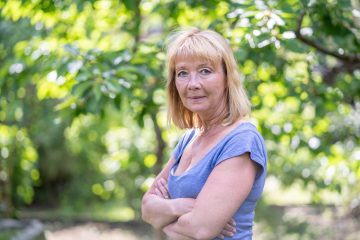COOPERATION. The Kamprad Family Foundation wants to fund research that is close to reality, where the results have the potential to be implemented in the near future. During the Foundation’s recent visit to the University of Gothenburg, a clear message was given: Read the call for applications carefully and write better applications!
The Kamprad Family Foundation stimulates education and research that promotes entrepreneurship, the environment, skills, health and social development. Education and research should be close to reality. For example, medical research results should be able to be translated into improved care for the elderly. Ideally, it should also be able to be translated into entrepreneurship, for example by developing resource-efficient and environmentally tailored manufacturing technologies in collaboration with entrepreneurs.
During the visit, which took place on November 28, representatives of the Kamprad Family Foundation met with university management, Sahlgrenska Academy management, and also with researchers conducting projects funded by the Foundation.

https://familjenkampradsstiftelse.se/
Better applications
The Foundation provided insight into its review process, what aspects are important in applications and also frequent reasons for rejecting applications from the researchers. Here it is important that the researcher has a good idea of what the call for applications is about and what the application should contain. All information is available on the Foundation’s website. A general reflection from Katarina Olsson, chair of the Kamprad Family Foundation, was that researchers need to get better at writing applications. Those wishing to receive grants from the Foundation need to ensure that the summary written in layman’s term is well formulated and discusses the potential impact of the project. Katarina Olsson stated that researchers are expected to be able to explain in a way that everyone understands if an application to the Foundation is to be approved.

The visit was very rewarding for Sahlgrenska Academy, says Ellen Rydberg, Head of the Sahlgrenska Academy Research Support Office:
“It is extremely important for us to have this opportunity to hear what the foundation’s goals and strategies are and what they wish to contribute to society. Understanding what kind of research or initiatives they want to support also helps researchers, so that they do not unnecessarily submit applications that are not within the Foundation’s interest,” says Ellen Rydberg.
Be cost-effective
Typically, calls for applications are made in two stages, with researchers first submitting a draft proposal and associated budget, and then submitting a full proposal, if they proceed. The Foundation has five criteria when reviewing a project: scientific quality, cost-effectiveness, innovation and originality, closeness to reality and implementation, and that funded projects should benefit many people.
“In terms of cost-effectiveness, the foundation was clear that they actually review the budget for a project, and that it is important that the budget is both well thought out and clear,” says Ellen Rydberg.
The visit also allowed the Foundation to see how the university has managed the funds it has invested in research.
“Of course, it is important that a foundation knows us well as an educational institution and that they are aware of the activities we carry out with their support. It was clear that the Foundation also needs inspiration and knowledge about ongoing activities that might be interesting for them to support,” says Ulrika Nilsson, senior advisor at the university and responsible for the Foundation’s visit.
Current projects
Two current projects at Sahlgrenska Academy that have received funding from the Kamprad Family Foundation were presented. Maria Bäck, associated with research at the Department of Molecular and Clinical Medicine at the Institute of Medicine, presented the ‘Remote exercise SWEDEHEART study’. Helle Wijk, professor at the Institute of Health and Care Sciences, reported on the OUT-FIT project.

The project is run by Helle Wijk and PhD student Madeleine Liljegren. It aims to raise awareness of the importance of the outdoors for the health and well-being of older people and care workers in residential care facilities.
“The project includes a PhD project of four sub-studies with the aim of generating new knowledge about the needs and wishes of older people regarding contact with the outdoors, as well as the staff’s experience of using the outdoors for activities that benefit health, care, nursing and rehabilitation. We are also developing an instrument to carry out a national systematic comprehensive survey of access to the outdoors in residential care facilities,” says Helle Wijk, who is also tasked with being an expert for the Foundation.
BY: ELIN LINDSTRÖM











